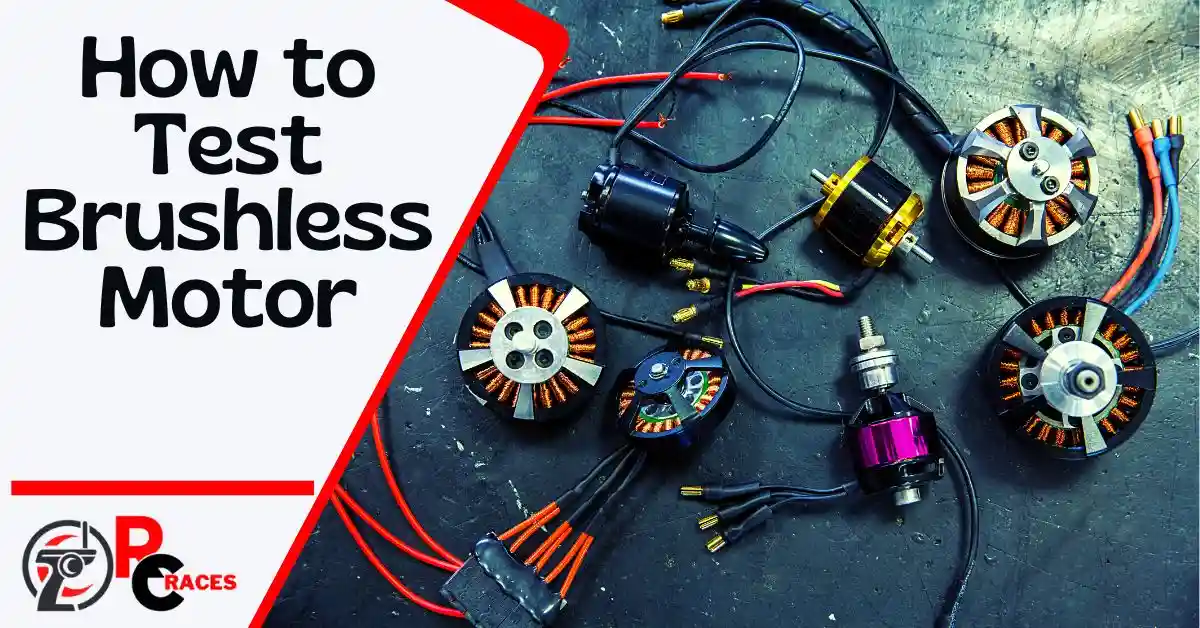Introduction
Having an RC car with a brushless motor is a true delight. Its high efficiency and speed attract any RC enthusiast.
But if you keep using it, it has to wear with time. To ensure the best care, you should check the condition of your motors from time to time.
So, how to tell if a brushless motor is bad?
Firstly, check for any irregularity in spinning, overheating, or noise. If any of these are present, then there is something definitely wrong with the motor. To check further, a brushless DC motor needs to be dry tested. By spinning, checking the 3-phase voltage and current in stator winding.
Well, that was a quick answer to understand the concept. But, if you want a detailed discussion, then we have an article just for you!
So let’s get right into it!
What Can Go Wrong With a Brushless Motor?
Brushless motors are the most popular equipment in the RC world. Whether it’s an inrunner or outrunner brushless motor. They are way better functioning than nitro-powered or electrical motors.
There are fewer moving parts in the brushless motor. Also as it runs by magnetic induction, it can reach exponentially higher speeds than any other motor. While using less power and getting less hot.
But just like any other equipment, constant usage can wear it out. A worn-out brushless motor isn’t ideal for your RC car.
There are a few things that you’ll generally notice when your motor is starting to go bad.
1. Reaching Higher Temperatures
All kinds of electronic devices get hot as they run. But there is a healthy limit to that.
Excessive heating is always a bad sign. It causes the electronics to wear out sooner. It also reduces the efficiency and shortens the lifespan of your motor.
So, if you notice your RC car is showing getting hotter than usual after a run, it’s time to check for damages.
2. Irregularity While Spinning
A perfectly fine motor has to spin smoothly at high speeds. That’s basically the first quality you have to check when getting a motor.
But with time, the motor gets worn out by debris and heat. It will eventually cause brushless motor stuttering.
At high RPMs, the irregular spinning will produce lots of sounds. So if your RC car is making a lot of sounds while running, that could mean that your motor is going bad.
If you notice your brushless motor not spinning freely, then it’s time to change it.
Well, these are very visible problems which will give you a sign that your motor is damaged. But sometimes it can be subtle. So you’ll have to perform checks to see if your motor is doing alright.
Especially before any kind of event, you should check your RC car thoroughly so that it doesn’t fail in the middle of an event.
But, there is a significant difference between how to test a brushed motor and how to test a brushless motor. Let’s check that out.
What Makes Brushless Motors Different?
Brushless motors work according to the principle of induction. There are permanent and electrical magnets that rotate due to induction. There are 3 wires connected that supply 3 phase AC current to the motor.
There is also an ESC or electronic speed controller attached to the brushless motor. Normal brushed motors can be directly connected to a power source. The speed varies with voltage.
Using the ESC, you can control the speed by levels of current and signals in brushless motors. It’s much easier to use. But, to check if the motor has any problems, you have to follow a technique.
This is called dry testing of brushless motors. So let’s check out how to dry test our brushless motor.
Dry Testing a Brushless Motor
Your brushless motor might be working. But with usage, everything wears out. So, you should have a routine checkup of your motors.
If not checked regularly, your RC car might stop working in an important situation.
So there is a step-by-step process for brushless motor troubleshooting. Let’s take a look at how to do that.
Step-1: Checking the Rotation
Firstly you have to check the rotation of the motor. If the motor doesn’t spin freely and smoothly, then it definitely has problems.
In such cases, you have to disconnect the ESC from the motor and disconnect the 3 phase wires too.
Then you attach a drill to the moving motor part and hold the stationary part. Now, spin the drill around 1000 RPM.
If the motor spins smoothly without any stuttering or noises, then it’s fine there. It means you can move on to the next testing.
Step- 2: Checking the 3-Phase Connection Voltage
Brushless motors have a 3-phase connection that creates the alternating magnetic field which runs the motor. You need a multimeter to check the brushless motor connections.
Now among the three wires, you’ll label them 1,2,3 respectively. Then connect a multimeter to wires 1 & 2 and check the voltage while running.
Here are some multimeters that you can find in your local hardware stores”
| Product-1 | |
| Product-2 |
Hopefully, this will help you find a suitable multimeter for your job.
You do the same taking wires 2 & 3 and 3 & 1 serially. They should have nearly the same reading every time.
If the reading fluctuates a lot, then it shows that there is some kind of short inside the motor. So, you need to replace it as soon as possible.
Step-3: Checking For Short Between Winding & Stator
Ideally, there will be no current flowing from the stator to the winding. But, if there is any kind of short, then it’ll have current passing through.
Attach one end of the multimeter with any metallic part of the stator. If it’s a fully coated and joint laminated stator, you can poke a small hole in it and touch the metal.
Then touch the other end with the winding. In a good motor, the reading should be an open circuit.
But if it detects any current flow, then it means that there is a short in the motors. It needs to be changed soon.
Also, look for burn marks or dark spots in the winding. Sometimes they don’t short, but they can burn from overheating and creates a lack of winding.
It can slow your motor down eventually. So it needs to be replaced also.
That’s how you check your brushless motor if it’s okay. It’s a very important practice to check your motors every now and then.
FAQs
Here are some of the frequently asked questions on this topic-
Are Brushless Motor RCs Faster Than Nitro Powered RCs?
Yes, brushless motor-powered RCs are much faster than the other forms of motors that RCs use. Because of the touchless inductive rotation, it can run much faster with more power efficiency and less heat. The record-holding fastest RC car is a brushless motor RC car.
Can You Change The Direction Of Rotation In A Brushless Motor?
Yes, you can. And it’s pretty easy too. Due to positioning or repurposing, you might need to change which direction your motor spins. In a brushless motor, it’s really easy to change direction. You just have to interchange the connection of any 2 wires from the 3-phase connection.
Do You Need A Cooling Fan In Brushless RC Motors?
Yes, cooling fans can be a good upgrade to your RC car. Electronics tend to heat up as they run and they have a specific heat-bearing limit. If it’s overheated, it will start to perform badly. So, if you’re racing on a hot summer day, a cooling fan on the brushless motors might give you the edge.
Wrapping Up
That’s all we had to offer. Now you should know how to tell if a brushless motor is bad.
Take care of your RC car if you want it to function in its best capacity. For that routine checkup and maintenance is a must.


